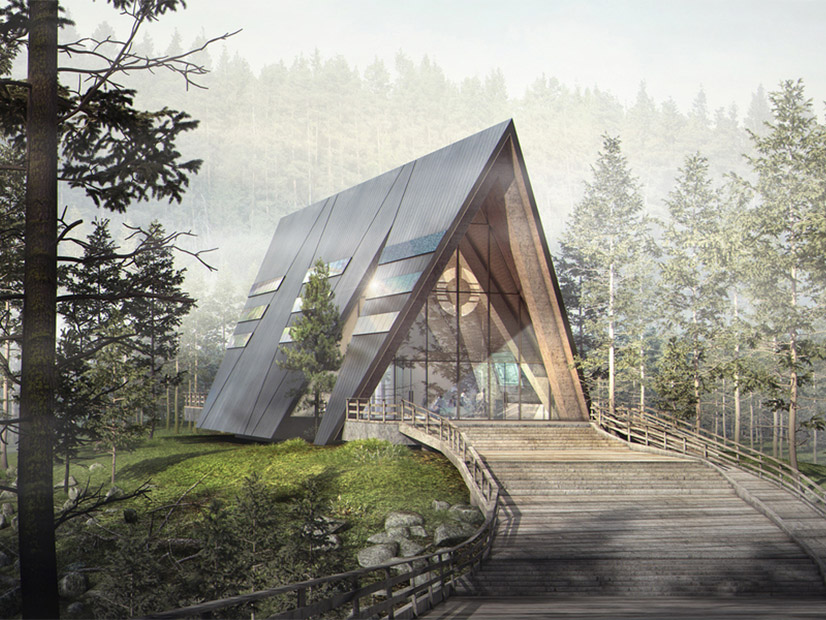
SAN DIEGO — Nuclear proponents pitched their plans for smaller and more innovative reactors at the National Association of Regulatory Utility Commissioners’ (NARUC) Summer Policy Summit on Wednesday, saying nuclear power is needed to provide a dependable source of carbon-free energy as coal plants retire, and wind and solar resources proliferate.
Chris Levesque, CEO of TerraPower — a company founded by Bill Gates — described the firm’s plans to develop a sodium-cooled reactor, paired with molten salt energy storage, near a PacifiCorp coal plant in southwest Wyoming slated to close in 2025. (See Wyoming Welcomes DOE-funded Advanced Nuclear Plant.)
In coming decades, “we’re going to retire all that 24/7 coal, and we’re going to add all this low-cost wind and solar, which is great, but it is intermittent” based on weather, Levesque said. “So, it’s really calling for nuclear, which we all believe … should be 20 to 30% of the carbon-free grid.”
In addition to the reactor’s baseload power, molten salt storage can ramp up quickly to meet peak demand, he said.
Levesque was one of four panelists in a session titled “Are We Ready for a Nuclear Reactor Renaissance?” and moderated by NARUC President Judith Jagdmann, a member of Virginia’s State Corporation Commission.
Jacob DeWitte — CEO and co-founder of Oklo Inc., a Silicon Valley startup aiming to build liquid-metal microreactors — said the company had secured a site license and fuel allocation from the Department of Energy to build its first compact fast reactor at the Idaho National Laboratory near Idaho Falls.
However, the Nuclear Regulatory Commission denied Oklo’s application in January, citing insufficient information. DeWitte said the company is continuing to press its case with the commission.
The compact modular units Oklo envisions could run for 20 years without refueling, DeWitte said, and would be housed inside buildings that look like futuristic ski chalets. Industry and rural communities could one day be Oklo’s customers, he said.
A rendering shows the exterior of Oklo’s proposed microreactor at the Idaho National Laboratory. | Oklo
“You have this kind of decentralized, dispatchable clean asset that all of a sudden, a lot of people in the industrial [and] commercial markets are pretty interested in for behind-the-meter generation,” he said. “You see a lot of appetite in different electric utility markets, ranging from the rural and the off-grid kind of co-ops and municipal utilities, to the larger-scale utilities, especially when you think about a system like this and what it can do for alleviating transmission stresses across a large grid like you have in the Western United States.”
Nuclear Energy Institute CEO Maria Korsnick called nuclear, currently the largest source of carbon-free energy in the U.S., critical to decarbonizing the grid.
“Our current reactors provide unmatched resiliency, which is the necessary foundation for a stable and affordable electric grid,” Korsnick said. “But that alone won’t be enough. In order for our communities and our economy to rise to these growing challenges, we must prepare our supply chain to build new, advanced reactor designs in the coming years.”
Reactors under development are “simpler and more adaptable to a variety of energy needs,” she said. “They will open new possibilities for carbon-free energy service at any scale, from the world’s largest cities to remote rural communities. And they can free communities from diesel and fossil fuels and require far less investment in transmission and distribution than other carbon-free resources.”
Pennsylvania Public Utility Commission Chair Gladys Brown Dutrieuille said that may be true, but she asked how nuclear advocates planned to convince a wary public to accept more nuclear plants and the risk of catastrophic accidents. She grew up in Middletown, Pa., the closest community to the Three Mile Island nuclear generating station, which partially melted down in March 1979.
“In the course of the conversation and talking about this advanced technology, how do you sell it to the consumer who may be concerned about building more nuclear even though they also see the value of nuclear?” she said.
Korsnick said “nuclear favorability” in the U.S. is about 60%, and a recent survey among those who live near nuclear plants showed nearly 80% favorability, she said. The assumption that nuclear is widely despised is a result of decades of successful campaigns by anti-nuclear groups, she said.
Earlier in the session, Jeffrey Merrifield — a former member of the NRC and partner at law firm Pillsbury Winthrop Shaw Pittman in D.C. — asked for a show of hands from attendees who had slept a mile from a nuclear reactor. A spattering of audience members raised their hands.
Merrifield said everyone should have raised their hands because a nuclear aircraft carrier was docked in San Diego Bay, just across a narrow stretch of water from the hotel where the conference was being held. The supercarrier USS Carl Vinson’s twin “200-MW nuclear reactors … are 40 years old and speed millions of miles around the earth,” he said.
Assembled in factories, the compact units are among “100 reactors owned and operated by the U.S. Navy, modular reactors that power our nation’s 10 nuclear aircraft carriers and a multiplicity of subs,” Merrifield said. The units have “an incredible track record, and what we’re trying to talk about today with these developers is using that same methodology to bring these technologies to the American people.”


